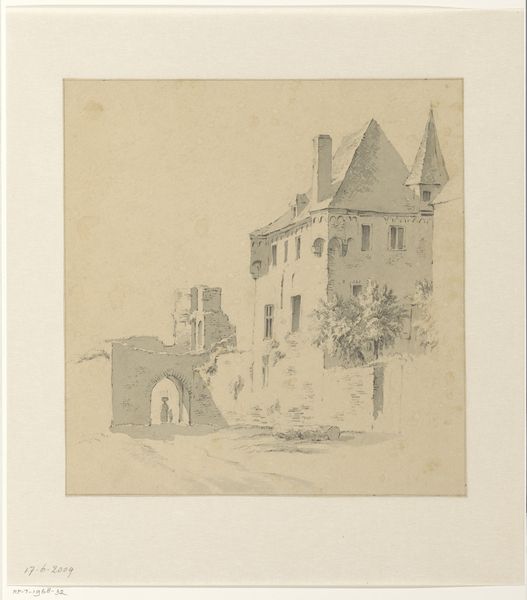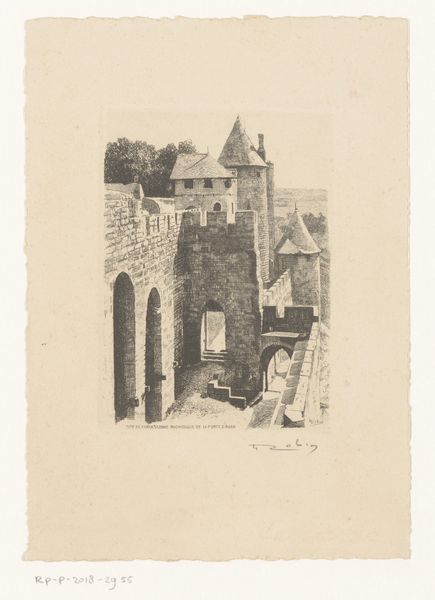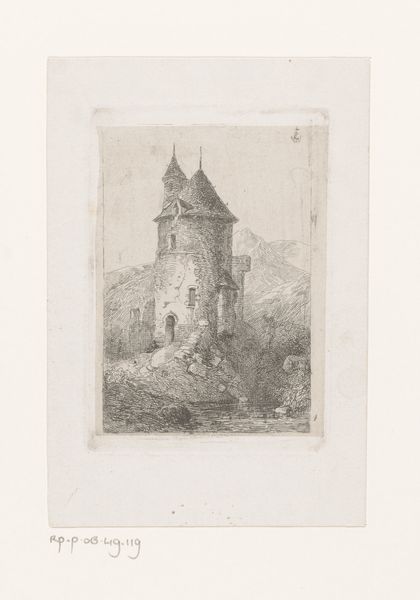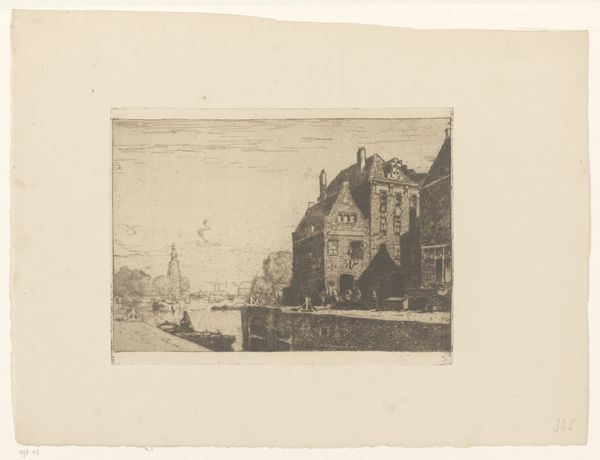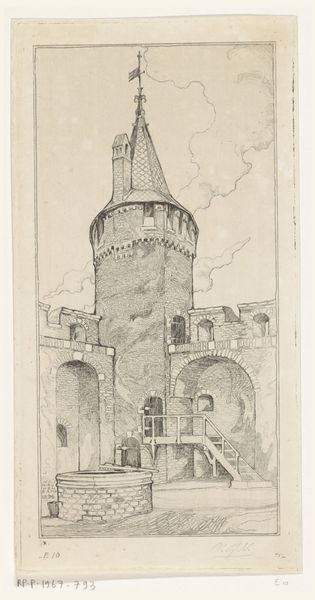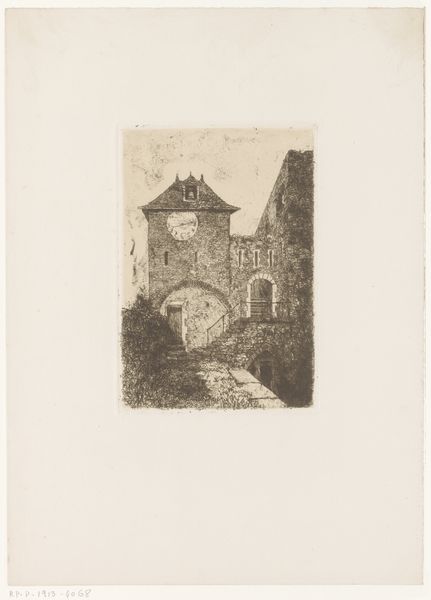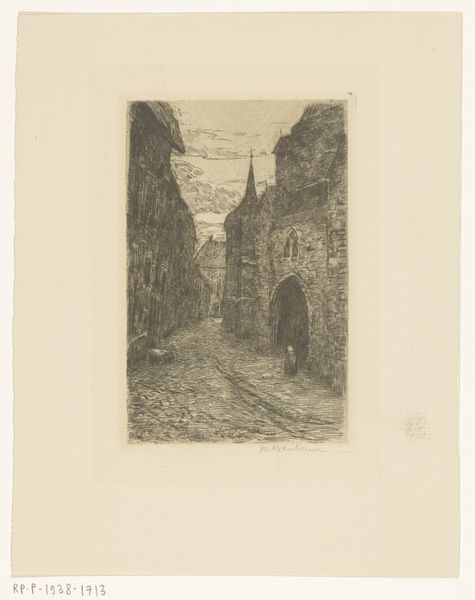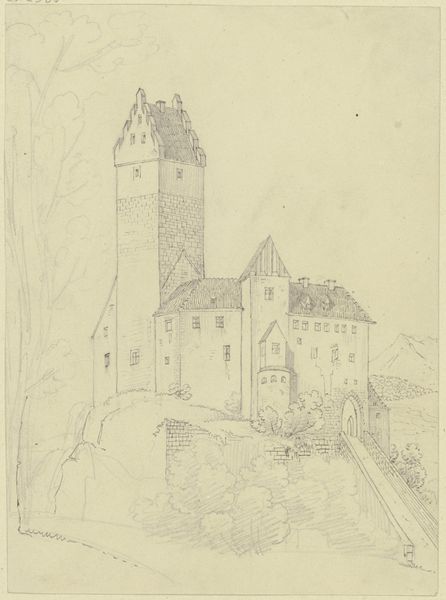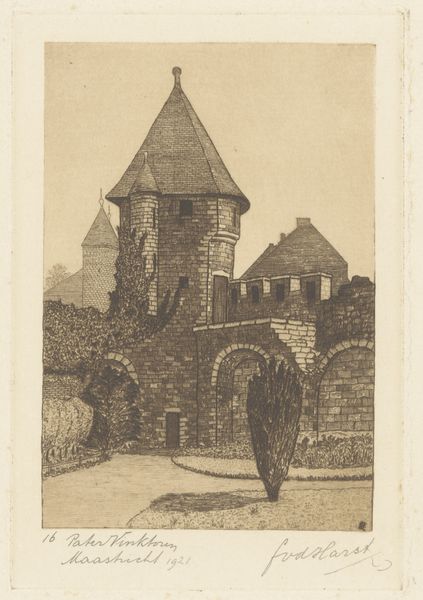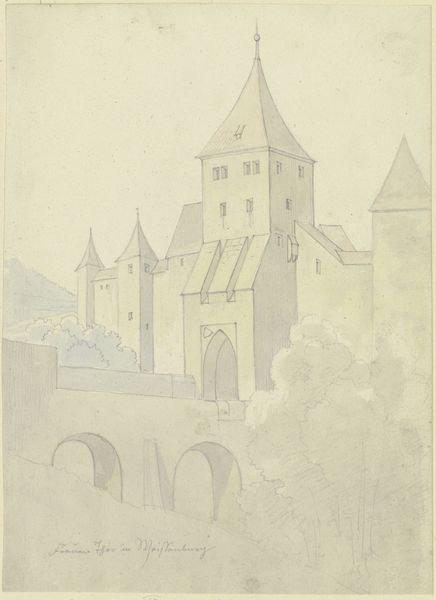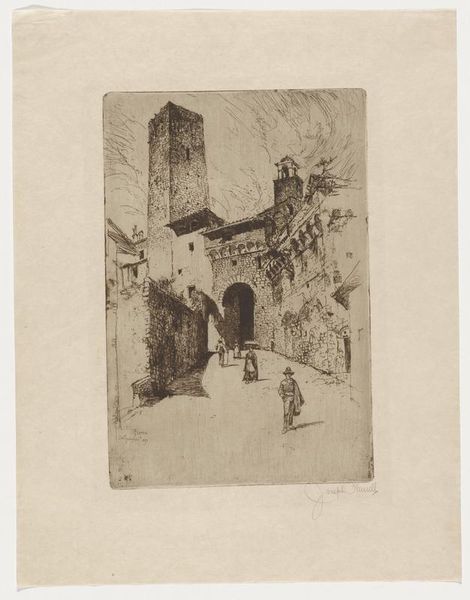
print, etching
# print
#
etching
#
landscape
#
cityscape
#
realism
Dimensions: height 235 mm, width 170 mm
Copyright: Rijks Museum: Open Domain
Léopold Robin made this print of Carcassonne using etching, a printmaking technique with a long history. The character of the work owes everything to the way it was made. In etching, an artist covers a metal plate with a waxy, acid-resistant ground, and then scratches an image into that surface with a needle, exposing the metal underneath. The plate is then immersed in acid, which bites into the exposed lines. This process is repeated to deepen the lines, which will eventually hold the ink. The plate is inked, wiped clean, and then pressed onto paper, transferring the image. Here, Robin shows us Carcassonne’s towers and walls with incredible detail. The variations in line thickness create depth and shadow, giving the scene a palpable sense of atmosphere. The process is labor intensive, a craft-based approach that translates the grandeur of the medieval architecture into a more intimate, personal statement. Ultimately, it's the dialogue between the artist’s hand, the chemical action of the acid, and the heavy pressure of the printing press that gives the work its unique texture and tone.
Comments
No comments
Be the first to comment and join the conversation on the ultimate creative platform.
